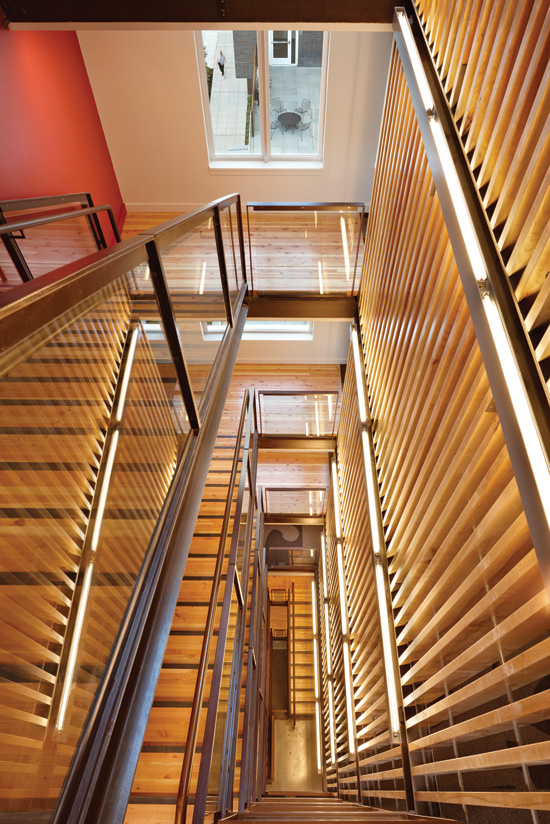Wood and Indoor Environment
Indoor Air Quality
Indoor air quality is a basic requirement for humans in any space. Wood itself is considered to be hypoallergenic; its smooth surfaces are easy to clean and prevent the buildup of particles that are common in soft finishes like carpet. Solid wood products, particularly flooring, are often specified in environments where the occupants are known to have allergies to dust or other particulates.
Most wood structural panel and engineered wood products use phenolic resins or diphenylmethane diisocyanate (MDI). Their unique chemistry makes these waterproof adhesives highly durable and stable, resulting in negligible formaldehyde emissions. Large-scale chamber tests have shown that formaldehyde emission levels in wood structural panels are no higher than the levels found naturally in the environment. For this reason, formaldehyde levels associated with phenolic resin-bonded products are exempt from the U.S. Department of Housing and Urban Development (HUD) testing and certification requirements.
The use of wood products can also improve indoor air quality by moderating humidity. Acting like a sponge, the wood absorbs or releases moisture in order to maintain equilibrium with the adjacent air. This has the effect of raising humidity when the air is dry, and lowering it when the air is moist— the humidity equivalent of the thermal flywheel effect.

Photo by Benjamin Benschneider, courtesy of Mahlum Architects
One of the many innovative uses of wood on the exterior and interior of new student housing at the University of Washington in Seattle.









